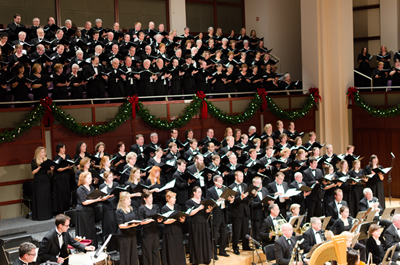Only the most diehard early music maven could take issue with the NC Symphony’s current series of concerts celebrating the 250th anniversary of the birth of Wolfgang Amadeus Mozart. The choice selection of compositions sample the composer’s work at the transition between his assimilation of then-current influences (Italian melody, French forms, German structure, and J.C. Bach) and finding his own voice as a composer-performer and as a mature composer. The role of performer-conductor was in the exacting hands of Joseph Silverstein. Even when he was still Concertmaster, Assistant Conductor, and as soloist (or even occasional 11th-hour substitute soloist) with the Boston Symphony Orchestra, the litany of most of The New York Times‘ reviews of his concerts characterized them as “patrician” in execution and style. “Patrician,” meaning “precise, elegant, stylish, and flawlessly balanced,” exactly describes his January 26 performances with the NC Symphony in Southern Pines’ Robert E. Lee Auditorium.
Silverstein had obviously rehearsed the orchestra carefully for the opening concert pieces, the Adagio in E, K.261 and the Rondo in C, K.373. With only a quick downbeat, the fine musicians played with tight ensemble and perfectly balanced dynamics as Silverstein turned his back to them and wove a seamless line of solo violin melody. His violin’s range of color and warm tone easily filled the hall without a trace of exaggeration. The choice of K.261 was apt since it was composed as a substitute slow movement for the Fourth Violin Concerto. The violinist who premiered it, Antonio Brunetti, found the original to be “too studied,” according to a letter Mozart wrote to his father. Most musicians ever since have wondered at Brunetti’s lack of insight. While less interesting than the original, K.261 is fine, with the solo violin weaving a melodic aria over muted violins. K.373 is a charming occasional piece written on the occasion of a visit to Vienna by Archbishop Colloredo.
Besides his well-known skill as a piano virtuoso, Mozart was also an able violinist, taught by his father Leopold; Leopold’s manual for the instrument is still relevant. The father wrote to his son “You have no idea how well you play the violin. If you would only do yourself justice, and play with boldness, spirit and fire, you would be the greatest violinist in Europe.” All of Mozart’s five violin concertos were composed in 1775, and each builds on previous achievements; the last three show his mature style. The composer himself and many music lovers have regarded the Violin Concerto No. 4 in D, K.218, as the best. In his letters, the composer refers to it as the “Strasbourg” concerto because of the use of a popular tune from that city. The soloist is given ample opportunity to show off with pearly scales and sparkling arpeggios while the original slow movement treats the violin like a singer in an operatic love scene.
Mozart’s Symphony No. 22 in C, K.162, is one of five compact, three- movement symphonies written for the Salzburg court between March and July 1773. These sum up what the composer learned from contemporaries and mark the threshold of his maturity. The key of C major and stirring scoring for paired horns and trumpets betoken the ceremonial and festive purpose of the work. The slow movement is radiant and soothing. Only a few of his late symphonies have livelier or more vivacious finales.
Mozart’s “Linz” Symphony (No. 36 in C, K.425) was composed, rehearsed, and performed within the space of five days in November 1783. The dark tone and chromatic modulations of the introduction are similar in mood to the Overture of his later opera, Don Giovanni. The scoring for brass and woodwinds is delightful, with marvelous pairings and juxtapositions. Silverstein’s retention of Music Director Grant Llewllyn’s divided seating of the violins (with the violas behind the first violins and the cellos behind the second violins) exposed their contrasting parts and exchanges of themes and phrases.
Mozart gives no cover for errors. Every section of the orchestra performed at high levels in both symphonies, as they had done throughout the works with the soloist. The separation of the cellos and violas accentuated their strongly independent parts. The conductor’s choices of dynamics, phrasing, and tempos, and his handling of transitions, were masterly and wholly convincing. Principals John Pederson, bassoon, and Paul Randall, trumpet, made outstanding contributions, and among the outstanding leads or solos from associate principals were those of oboist Michael Schultz and hornist Kimberly Van Pelt.
Updated 1/30/06.












